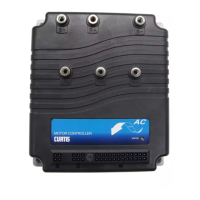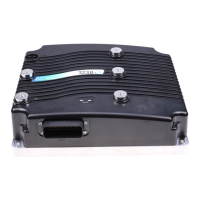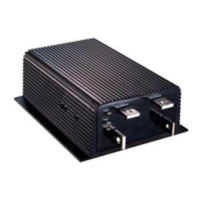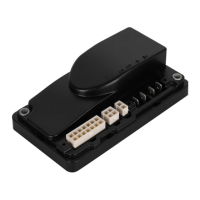Curtis 1243GEN2 Manual
58
5 — VEHICLE PERFORMANCE ADJUSTMENT
2
Tuning the Controller to the Motor
The 1243GEN2 controller has the flexibility to be tuned to nearly any separately
excited motor from any manufacturer. The programmable parameters allow full
control of the motor’s maximum armature current during driving and braking
and full control of the motor’s maximum and minimum field current as well as
the field current relationship to the armature current. This flexibility allows
motor performance to be maximized while protecting it from operating outside
its safe commutation region.
In order to properly tune the controller, the following information should
be obtained from the motor manufacturer:
• MAXIMUM ARMATURE CURRENT RATING
• MAXIMUM FIELD CURRENT RATING
• MINIMUM FIELD CURRENT RATING
• FIELD RESISTANCE, HOT AND COLD.
The performance of a separately excited motor changes depending on tempera-
ture. This is due to the change in field winding resistance as the motor heats up
through use. When the field winding temperature increases, so does its resis-
tance; therefore, the maximum current that can be forced through the winding
is reduced. Reductions in the field current over the motor’s typical operating
temperature range can be 10% to 50%. Since the maximum available field
current determines the maximum torque that can be produced by the motor, the
vehicle’s performance under load and up inclines will change as the motor heats
up. The change in performance can be limited by tuning the motor when it is
hot rather than cold. Therefore, it is recommended that the following procedure
be performed with a hot motor.
STEP 1. Using the programmer’s Program Menu, set the Drive Current
Limit parameter value in each mode to the smaller of: (a) the
motor’s peak armature current rating, or (b) the maximum
controller drive current limit. This value can later be adjusted to
establish the desired vehicle driving feel in each mode.
STEP 2. Set the Braking Current Limit parameter value in each mode to
the smaller of: (a) the maximum motor armature current rating,
or (b) the maximum controller braking current limit. This value
can later be adjusted to establish the desired vehicle braking feel
in each mode.
STEP 3. To set the Field Max parameter value, first decide whether you
want to maintain consistent vehicle operation throughout the
motor’s temperature range. If you do, proceed to Step 4. If,
however, maintaining operational consistency across motor tem-
perature is not a concern, but achieving maximum torque is,
proceed to Step 5.
STEP 4. For the most consistent operation across temperature, set the
Field Max parameter to the maximum field current available at
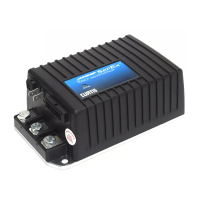
